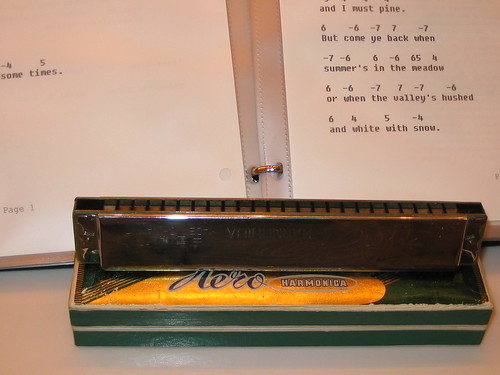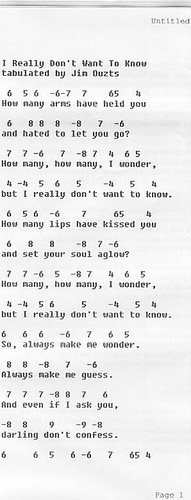
Elvis Presley has always been a phenomenon, both in life and in death. But more so in death, when we measure it in terms of financial successes, and even in popularity and longevity. His songs and other iconic items about him continue to tap into new areas of the globe, ably assisted by a mini-industry that was spawned by his enduring image and popularity, the Elvis impersonators, or as now nicely referred to, the Elvis tribute artists.
I had often wondered whether this personal but enduring child-like adulation of his singing that I treasure was a unique aberration, but still a local limited aberration. However, the continued world-wide and unflagging responses to his songs to this day would seem to belie this.
This brings one to wonder what exactly was in his singing that has made it so durable, in spite of all the equally gifted artists that have come and gone after him and the varying ways that songs are now both composed and delivered to ever-changing fickle audiences.
Why indeed should his old-style singing endure above the deluge of singing artists that now colonize the colossal entertainment firmament? After all, Elvis and the ensuing rock and roll phenomenon broke loose more than 50 years ago.
But rock and roll has undeniably prevailed, and Elvis continues to reign as its undisputed King, which title by no means just implies an empty and hollow attribution.

His voice and style of singing must have something to do with his durability
For most of us music illiterates, we probably should turn to the experts in music to find out and reveal for us what vocal gifts Elvis was blessed with. Elvis himself probably was not fully aware of his unique gifts, for after all he was essentially self-taught in his music, in both his singing and the instruments that he was fond of using, the guitar and the piano.

Here are some descriptive analyses of the voice(s) of the King as discerned by music people.
But first, a few basic primer points on music and voice.
Let us recall our musical scale – do, re, mi. fa, so, la, ti, do. Which is an octave, that is, of eight notes, beginning and ending on the same letter name. The “do” refers to C, “re” to D, and so on, E, F, G. etc.
The highest male voice is the tenor, and then next comes the baritone, and lastly the low bass, with many variations in between.
“The voice covers two octaves and a third, from the baritone low-G to the tenor high B, with an upward extension in falsetto to at least a D flat. Presley’s best octave is in the middle. D-flat to D-flat. Call him a high baritone.” “Moreover, he has not been confined to one type of vocal production” “He is a naturally assimilative stylist with a multiplicity of voices – in fact, Elvis’ voice is an extraordinary voice, or many voices.” – (
Henry Pleasants, The Great American Popular Singers)
“I suppose you’d call him a lyric baritone, although with exceptional high notes and unexpectedly rich low ones. But what is more important about Elvis Presley is not his vocal range, nor how high, or low it extends, where its center of gravity is. By that measure, Elvis was all at once a tenor, a baritone and a bass, the most unusual voice I’ve ever heard.” – (
Gregory Sandows, Music Professor at Columbia University)
“He rarely over-sang when recording, delivering a vocal to suit the song.” – (
Paul Simpson, The Rough Guide To Elvis)
“(He) could jump from octave to countless other octaves with such agility without voice crack, simultaneously sing a duet with his overtones, rein in an always-lurking atomic explosion to so effortlessly fondle, and release, the most delicate chimes of pathos.” – (
Mike Handley, narrator and TV/radio spokesman)
“..a musician … pointed out that despite an impressive vocal range of two and a half octaves – something approaching perfect pitch -, Elvis was willing to sing off-key when he thought the song required it. Those off-key notes were art.” – (
Patrick H. Adkins, The Dream Vaults of Opar)
“The guy had a variety in his vocal styles and approach; he could make more vocal tones, with just his voice, than a guitar player with 50 pedals and gadgets. If you never even saw the guy, you could plain feel, not just hear the emotion and passion in his voice.” – (
Country singer Roger Wallace)
“The voice has mixed propensities, hovering between tenor and bass and everything in between. Even a convincing falsetto lay within his range.” – (
Jackson Baker in Memphis Magazine)
“There is nothing wrong, and everything right, in opening the vowel in the higher register so that the higher notes can be sustained. Elvis Presley was very open in his singing style even though he was ‘the’ rock and roller.” – (
Brian Gilbertson, world-famous voice teacher)
“Presley’s registration, the breadth of his tone, listening to some of his records, you’d think you were listening to an opera singer. But …it’s an opera singer with a deep connection to the blues.” – (
Jerry Wexler, co-founder of Atlantic Records)
“…Elvis’ range was about two and a quarter octaves, as measured by musical notation, but his voice had an emotional range from tender whispers to sighs down to shouts, grunts, grumbles and sheer gruffness that could move the listener from calmness and surrender, to fear. His voice can not be measured in octaves, but in decibels; even that misses the problem of how to measure delicate whispers that are hardly audible at all.” – (
Lindsay Waters, Come Softly, Darling, Hear What I Say)
And here’s what they say about how some of his more enduring songs were rendered.
It’s Now Or Never – “he ends it in a full voice cadence (A,G,F) that has nothing to do with the vocal devices of rhythm, blues, and country.”
Milky White Way - “he’s got the strength of a bassman and the sweetness of a tenor.”
All Shook Up/Are You Lonesome Tonight - “His jagged, bubbly highs, and Southern baritone jump from those recordings like spirits from a cauldron. Elvis crooned romantically, then screeched relentlessly, always pouring his heart into the lyric and melody” (
James Campion)
Hurt - “…singing in a register that gave more impact to his phrasing, and even hitting notes that could cause a mild hernia.” (
Mike Kalina)
Heartbreak Hotel - “…where Presley alternately shouts words with full lungs, then gulps the following back, as if under water but without missing a beat.” (
David Townsend)
Loving You - “…Presley’s baritone on this, the ultimate slow dance number, is almost too powerful, virtually rumbling the floor.” (
David Townsend)
That’s Alright Mama - “…what I liked about the early records was that beautifully vulnerable high voice. (
Jon Landau, Rolling Stone)
Long Black Limousine – “…the accompaniment is ornamented with bells, horns, and female choir, but it is Elvis’ voice upon which the words depend for their dramatic effect. In a departure quite uncharacteristic of country music, there is a fierce, almost shocked indignation and passionate intensity in his voice, transforming a fairly ordinary song into a vehicle for saving social protest. (
Rolling Stone)
Hawaiian Wedding Song – “Elvis takes particular advantage of his voice’s strong lower middle and higher note registers, made particularly difficult because of the need to sing in cascading notes. (
BMG Review)
In the end, when his physical health started deserting him, the timbre of his voice faithfully stayed with him, enabling us, his faithful fans, to overlook the caricatured image of a bloated Elvis in the funny oversized and bejeweled suit.
Live Long the King!
Graphics:
All Shook Up
Graceland Cellars
2004 California Sauvignon Blanc
Vinted and Bottled at Santa Rosa, CA
1973, Aloha From Hawaii
Elvis Presley: Entertainer of the Century
Plate Collection
The Bradford ExchangeCredits:
Wikiquote
 As for me, I was fortunate enough to have acquired over time a precious number of them (about 76) all about one subject, poster prints of the the paintings/illustrations of the late artist, Norman P. Rockwell, a very popular symbol of things Americana.
As for me, I was fortunate enough to have acquired over time a precious number of them (about 76) all about one subject, poster prints of the the paintings/illustrations of the late artist, Norman P. Rockwell, a very popular symbol of things Americana. A quote from the Wikipedia entry for Saturday Evening Post:
A quote from the Wikipedia entry for Saturday Evening Post: 





































